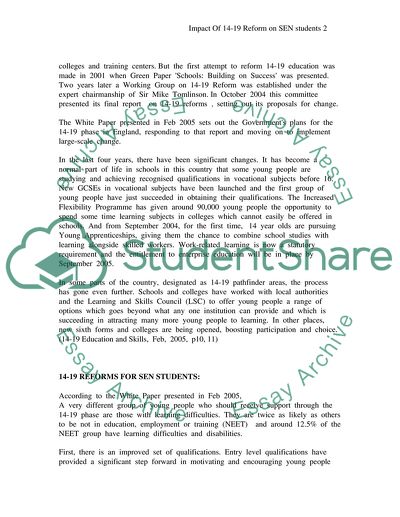Cite this document
(“Impact Of 14-19 Reform on SEN Students Essay Example | Topics and Well Written Essays - 1750 words”, n.d.)
Impact Of 14-19 Reform on SEN Students Essay Example | Topics and Well Written Essays - 1750 words. Retrieved from https://studentshare.org/education/1535734-impact-of-14-19-reform-on-sen-students
Impact Of 14-19 Reform on SEN Students Essay Example | Topics and Well Written Essays - 1750 words. Retrieved from https://studentshare.org/education/1535734-impact-of-14-19-reform-on-sen-students
(Impact Of 14-19 Reform on SEN Students Essay Example | Topics and Well Written Essays - 1750 Words)
Impact Of 14-19 Reform on SEN Students Essay Example | Topics and Well Written Essays - 1750 Words. https://studentshare.org/education/1535734-impact-of-14-19-reform-on-sen-students.
Impact Of 14-19 Reform on SEN Students Essay Example | Topics and Well Written Essays - 1750 Words. https://studentshare.org/education/1535734-impact-of-14-19-reform-on-sen-students.
“Impact Of 14-19 Reform on SEN Students Essay Example | Topics and Well Written Essays - 1750 Words”, n.d. https://studentshare.org/education/1535734-impact-of-14-19-reform-on-sen-students.


